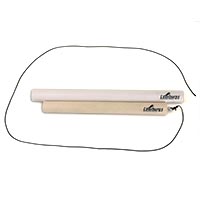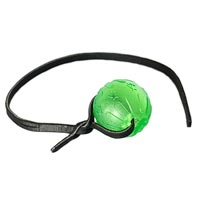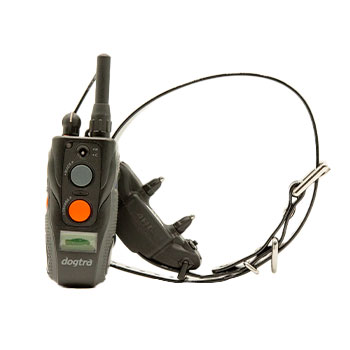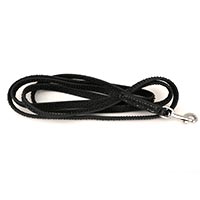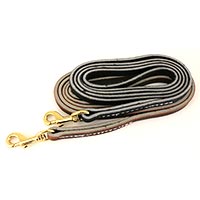May 19, 2011
My 11 month GSD went after a deer and was gone for 15 minutes. What should I do?
Full Question:
Hello Ed,I am training my puppy - an 11 month old GSD - in SAR, and I am a beginner at this. A few days ago she did something very bad - she ran after a deer and was gone for 15 minutes. I know that this can only get worse, and I want to nip it in the bud ASAP. Do you have an article or a video that addresses this? I have received conflicting information from other trainers and the internet, ie:
1. Get an e-collar and correct her. (Sounds good, but how do I get a deer to cooperate? Since repetition seems to be one key to learning, if I can only get a deer to come by once a week or once a month, how would this work?
2. Get deer breaking scent, put it out in yard or park, etc., and correct her when she shows an interest in it. Again, how do I know that she will generalize from the inanimate scent to the moving, running deer?
3. Get deer breaking scent and out it on a pad on her collar, or squirt it up her nose (!?) until she is sick and tired of it. Given the sensitive nature of a dog's nose, this seems cruel; and if she has deer scent up her nose, won't that interfere with the air scent training I'm working on?
I'd like to do things correctly the first time, and to end this behavior ASAP. Any advice would be greatly appreciated.
Thank you,
Eva

 Cindy's Answer:
Cindy's Answer:
Deer braking scent is about as effective as putting non-breeding scent on a 20 year old college student.
Get an e-collar and learn how to use it. I use Dogtra. Get a DOGTRA 1700 NCP.
Train the dog the recall with the collar - not associated with tracking training.
I would do what I say below as far as conditioning the dog to the collar going on and coming off. Then I would take the dog for a walk in areas where there are deer. I would not teach it on a training track.
Make a mistake here and use too much power and you have a pet and not a working dog.
Here is a pre written text I send people:
This is the collar I use on my personal dog. Electric collars are not difficult to work. The most important thing is to introduce them properly to the dog. The key is to do the training correctly so the dog does not see the collar going on as a trigger to mind. We want the trigger to mind to be our voice command. This is done over a period of 2 weeks. The protocol is to put the collar on and take it off 4 to 5 times a day – switch collars around – take the prong off and put the electric collar on – etc etc etc After doing this for two weeks the collar going on will mean nothing to the dog.
Then try and put the collar on 30 minutes before going out and take it off 30 minutes after coming back in.
Once this is done the next step is to determine the shock level. I ALWAYS use the NICK button and not continuous. In 20 years I can probably count the number of times I have used CONTINUOUS on one hand. A lot of trainers use it – I don’t. I look at a collar like I look at a leash correction.
To determine the shock level for normal training (not for chasing a squirrel or a cat) I will start by shocking the dog for no reason at its lowest setting. Look for the point where the dogs head just jerks a little or he looks at the ground to find the land mine he just stepped on – an eye blink is not enough and a YELP is to high.
I always want my dog to know the shock came from me. So just like in normal training – if a dog screws up I say “NO” then repeat the command as I give a correction. With a collar it’s the same. The sequence is:
Say NO
Then Shock
In the beginning you say “NO” – give a shock as you quickly give a leash correction. (all initial collar training is done on leash) The goal is to first be able to eliminate the leash correction, then eliminate the shock so you only have to use your voice. I “read the moment” to see if simply saying “NO” results in the dog minding. When you see this you are making headway – but you only wait for 1 second .
When you move your training with an e-collar to areas of higher distraction – seeing other dogs, cats or wild animals you will always have to bump up the level of shock so be prepared ahead of time. A dog that works on level 2 shock in your back yard will need a level 5 – 6 – or 7 shock when it sees something that really distracts it.
What I do is say “NO” and shock the dog the INSTANT it even looks at an animal. I don’t wait for the dog to go into high drive and want to chase – at that point you would probably have to use level 10 because your timing was bad. The dog will learn that just looking at an animal will result in a painful experience. I have seen PITT BULLS that will turn their head and quickly look away when another animal comes into view.
In the end – a good dog trainer who has a dog that requires this training will NEVER TAKE HIS DOG out without a collar on. Why test the moment? That’s foolish. Look at the collar as a tool for EMERGENCIES. To leave it home when you walk your dog would make no sense. The security of having it there will make you relax and enjoy your dog more.
Get an e-collar and learn how to use it. I use Dogtra. Get a DOGTRA 1700 NCP.
Train the dog the recall with the collar - not associated with tracking training.
I would do what I say below as far as conditioning the dog to the collar going on and coming off. Then I would take the dog for a walk in areas where there are deer. I would not teach it on a training track.
Make a mistake here and use too much power and you have a pet and not a working dog.
Here is a pre written text I send people:
This is the collar I use on my personal dog. Electric collars are not difficult to work. The most important thing is to introduce them properly to the dog. The key is to do the training correctly so the dog does not see the collar going on as a trigger to mind. We want the trigger to mind to be our voice command. This is done over a period of 2 weeks. The protocol is to put the collar on and take it off 4 to 5 times a day – switch collars around – take the prong off and put the electric collar on – etc etc etc After doing this for two weeks the collar going on will mean nothing to the dog.
Then try and put the collar on 30 minutes before going out and take it off 30 minutes after coming back in.
Once this is done the next step is to determine the shock level. I ALWAYS use the NICK button and not continuous. In 20 years I can probably count the number of times I have used CONTINUOUS on one hand. A lot of trainers use it – I don’t. I look at a collar like I look at a leash correction.
To determine the shock level for normal training (not for chasing a squirrel or a cat) I will start by shocking the dog for no reason at its lowest setting. Look for the point where the dogs head just jerks a little or he looks at the ground to find the land mine he just stepped on – an eye blink is not enough and a YELP is to high.
I always want my dog to know the shock came from me. So just like in normal training – if a dog screws up I say “NO” then repeat the command as I give a correction. With a collar it’s the same. The sequence is:
Say NO
Then Shock
In the beginning you say “NO” – give a shock as you quickly give a leash correction. (all initial collar training is done on leash) The goal is to first be able to eliminate the leash correction, then eliminate the shock so you only have to use your voice. I “read the moment” to see if simply saying “NO” results in the dog minding. When you see this you are making headway – but you only wait for 1 second .
When you move your training with an e-collar to areas of higher distraction – seeing other dogs, cats or wild animals you will always have to bump up the level of shock so be prepared ahead of time. A dog that works on level 2 shock in your back yard will need a level 5 – 6 – or 7 shock when it sees something that really distracts it.
What I do is say “NO” and shock the dog the INSTANT it even looks at an animal. I don’t wait for the dog to go into high drive and want to chase – at that point you would probably have to use level 10 because your timing was bad. The dog will learn that just looking at an animal will result in a painful experience. I have seen PITT BULLS that will turn their head and quickly look away when another animal comes into view.
In the end – a good dog trainer who has a dog that requires this training will NEVER TAKE HIS DOG out without a collar on. Why test the moment? That’s foolish. Look at the collar as a tool for EMERGENCIES. To leave it home when you walk your dog would make no sense. The security of having it there will make you relax and enjoy your dog more.
100% (17 out of 17)
respondents found this answer helpful


Can't find what you're looking for?



